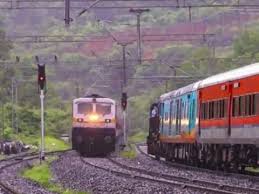GMRT raise concern over functioning of giant telescope located near Pune-Nashik high speed rail project route
By Lokmat English Desk | Published: February 8, 2023 11:38 AM2023-02-08T11:38:32+5:302023-02-08T11:39:20+5:30
With the Pune-Nashik High-Speed Rail project getting in-principle approval of the Centre, researchers at the Giant Metrewave Radio Telescope ...

GMRT raise concern over functioning of giant telescope located near Pune-Nashik high speed rail project route
With the Pune-Nashik High-Speed Rail project getting in-principle approval of the Centre, researchers at the Giant Metrewave Radio Telescope (GMRT) here have expressed concern over likely disruption of the scientific facility operations due to continuous movement of trains on the route located near the observatory antennas.
When contacted, a senior official of the Maharashtra Rail Infrastructure Development Corporation (Maharail) told PTI that necessary precautions will be taken and all the issues will be resolved.
The GMRT, which operates at 150-1420 MHz, is located at Khodad, 80 km away from Pune city. It consists of 30 antennas each of 45 m diameter, and is operated by the National Centre for Radio Astrophysics (NCRA) of the Tata Institute of Fundamental Research.
Maharashtra Deputy Chief Minister Devendra Fadnavis on Sunday said the Ministry of Railways has accorded in-principle approval for the Pune-Nashik high-speed rail project, which will boost development and provide seamless connectivity to the industrial zones of both the cities.
A source at the GMRT told PTI that the route chosen for the high-speed rail project passes through Narayangaon, which is within the 15 km circle of the antennas at the facility and very close to some of the antennas.
This whole route is going to be very dangerous (for GMRT operations) for the reason that when a high-speed electric train moves, its pantograph touches the high power line and that is like make-and-break contact and sparks are generated which produce unwanted radiation, the source said.
Apart from these disturbances, all modern trains have communication systems which are normally of frequencies at which the GMRT operates, and this may cause a lot of problems, the source added.
NCRA Director Yashwant Gupta said they have initiated a dialogue with the rail authorities concerned to address the issue.Though we have received some response, we have not got a final conclusion for the issue and under those circumsta nces, giving the approval to go ahead is worrisome for us, said Gupta.
Open in app